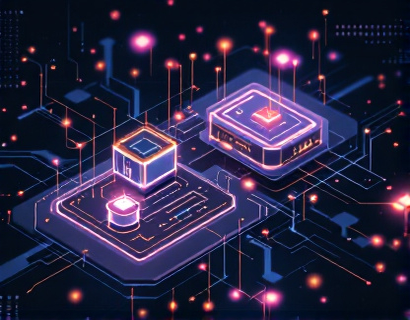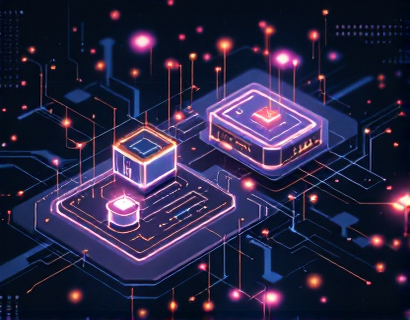AI-Driven Insights into the Baguette Industry: A Comprehensive Resource for All
The world of baking, particularly the production of baguettes, is a fascinating blend of art and science. For students, educators, parents, and industry professionals, gaining a deep understanding of this sector is crucial. This article aims to provide verified, educational, and child-friendly insights into the baguette industry, leveraging advanced AI technology to create an interactive and safe learning environment. The AI chat interface designed for this purpose ensures that users of all ages can access reliable information and engage in meaningful discussions about baguette services and the broader food industry.
Understanding the Baguette: Origin and Evolution
The baguette, a symbol of French culinary excellence, has a rich history that dates back to the early 20th century. Originating in Paris, the baguette evolved from the longer, thinner pain de campagne, which was a staple bread for the working class. The modern baguette, with its distinctive shape and crust, was perfected in the 1920s, becoming a national treasure of France. Today, it is enjoyed worldwide, not only in France but also in many other countries where it has become an integral part of the local cuisine.
The process of making a baguette is both intricate and fascinating. It begins with a simple dough made from flour, water, yeast, and salt. The dough is kneaded, allowed to ferment, and then shaped into the characteristic elongated form. After a second fermentation period, the baguettes are baked in a hot oven, resulting in a crispy exterior and a soft, airy interior. This simple recipe belies the complexity of the process and the skill required to produce a truly exceptional baguette.
The Baguette Industry: Key Components and Trends
The baguette industry encompasses a wide range of activities, from small artisan bakeries to large industrial producers. Each segment plays a vital role in meeting the diverse demands of consumers. Artisan bakeries focus on traditional methods and high-quality ingredients, often catering to local markets and specialty stores. These bakeries pride themselves on crafting baguettes that reflect the unique flavors and traditions of their regions.
On the other hand, industrial bakeries produce baguettes on a large scale, using automated processes to ensure consistency and efficiency. These operations supply supermarkets, restaurants, and other food service providers. The growth of the baguette industry has been driven by several factors, including the increasing global appreciation for French cuisine, the rise of convenience foods, and the demand for high-quality, authentic bread products.
Recent trends in the baguette industry include a shift towards healthier options, such as whole grain and gluten-free baguettes, and the incorporation of innovative ingredients to cater to changing consumer preferences. Sustainability is another key trend, with many bakeries adopting eco-friendly practices and sourcing ingredients from local, organic farms. These developments not only enhance the product but also align with the values of modern consumers who prioritize health and environmental responsibility.
Technological Advancements in Baguette Production
Technology has significantly transformed the baguette production process, from dough mixing to baking. Advanced mixing machines and automated kneading systems have improved efficiency and consistency, allowing bakeries to produce high-quality baguettes at scale. Temperature and humidity control in ovens ensures that each batch is baked to perfection, resulting in uniform texture and flavor.
One of the most exciting technological advancements is the use of AI in the baguette industry. AI-driven systems can optimize production workflows, predict maintenance needs, and even assist in quality control. For example, machine learning algorithms can analyze data from sensors to detect anomalies in the dough or baking process, enabling real-time adjustments to maintain product quality. This level of precision not only enhances the final product but also reduces waste and operational costs.
For educators and students, understanding these technological advancements is crucial. It provides insights into how innovation can improve traditional industries and opens up discussions about the role of technology in preserving culinary arts. AI chat interfaces can facilitate these conversations by providing accessible and engaging content that explains complex concepts in simple terms.
Educational Resources for Learning About Baguettes
For those interested in delving deeper into the world of baguettes, a variety of educational resources are available. Books, documentaries, and online courses offer comprehensive insights into the history, production techniques, and cultural significance of the baguette. However, these resources may not always be tailored to different age groups or learning styles.
This is where an AI chat interface comes into play. By interacting with a chatbot designed specifically for educational purposes, users can ask questions, receive detailed explanations, and explore topics at their own pace. The chat interface can be customized to suit various audiences, from young children to adults, ensuring that the content is both accurate and engaging.
For example, a child might ask, "How is a baguette made?" The AI could respond with a step-by-step explanation, including images and videos to illustrate the process. For a more advanced user, the chatbot could delve into the chemical reactions that occur during fermentation or discuss the economic impact of the baguette industry on local communities.
Interactive Learning with AI Chat Technology
The AI chat technology used in this platform is designed to be interactive and user-friendly. It employs natural language processing (NLP) to understand and respond to user queries in a conversational manner. This makes the learning experience more engaging and less intimidating, especially for those who may feel overwhelmed by technical or complex information.
One of the key features of this AI chat interface is its ability to provide content verification. All information provided is cross-referenced with credible sources to ensure accuracy and reliability. This is particularly important in an industry where misinformation can lead to misunderstandings about food safety, production methods, and cultural significance.
For parents and educators, the chat interface offers a safe and controlled environment for children to learn. The platform can be configured to filter out inappropriate content and provide age-appropriate responses. This ensures that children can explore topics of interest without encountering unsuitable material.
Real-World Applications and Case Studies
To illustrate the practical applications of AI in the baguette industry, let's consider a few case studies. One example is a large bakery chain that implemented an AI system to monitor and optimize its production lines. By analyzing data from various stages of the production process, the AI identified bottlenecks and suggested improvements that led to a 15% increase in efficiency. This not only reduced costs but also allowed the bakery to meet higher demand during peak periods.
Another case study involves a group of culinary students who used an AI chatbot to research and present a project on the history and cultural impact of the baguette. The chatbot provided them with a structured framework, reliable sources, and interactive elements to enhance their presentation. The students not only gained valuable knowledge but also developed important research and presentation skills.
These examples demonstrate how AI can be a powerful tool in both industrial and educational settings. By providing accurate, verified information and interactive learning experiences, AI chat interfaces can significantly enhance understanding and appreciation of the baguette industry.
Conclusion: The Future of Baguette Industry Insights
As the baguette industry continues to evolve, the need for accessible, accurate, and engaging educational resources becomes increasingly important. The AI-driven chat interface described in this article represents a significant step forward in providing such resources. Whether you are a student exploring the culinary arts, an educator looking to enrich your curriculum, or a professional seeking to deepen your knowledge, this platform offers a safe and informative environment to learn about the fascinating world of baguettes.
By leveraging the power of AI, we can ensure that the insights provided are not only reliable but also tailored to the needs of different audiences. The future of the baguette industry, and food industry as a whole, is bright, and tools like this AI chat interface will play a crucial role in shaping that future. Embrace the opportunity to explore, learn, and engage with the world of baguettes in a way that is both educational and enjoyable.










































